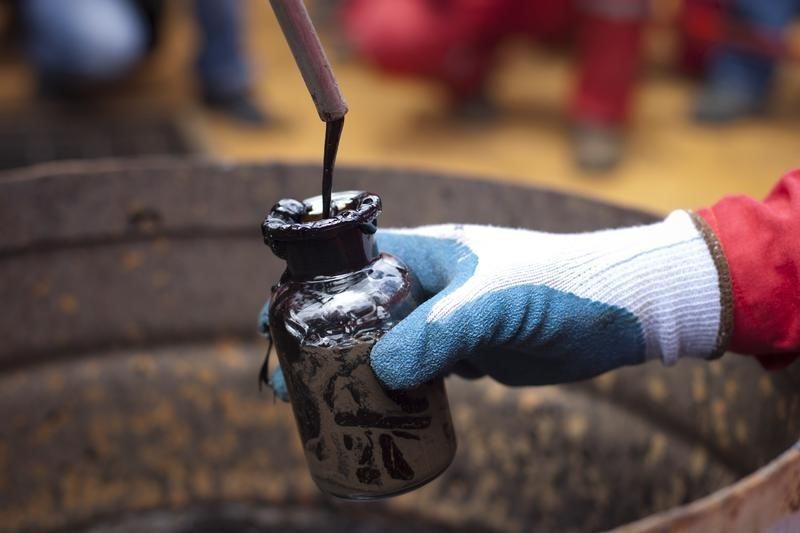By Barani Krishnan
Investing.com - Counting on the dollar’s weakness can never be a sure thing for oil bulls, especially when U.S. crude builds are heading for the skies while demand relatively points to the floor.
New York-traded West Texas Intermediate, or WTI, crude for March settled down 53 cents, or 0.7%, at $75.88 a barrel on Thursday. That deepened Wednesday’s 2.7% tumble in WTI.
London-traded Brent crude for March delivery settled down 67 cents, or 0.8%, at $82.17, extending the previous session’s slide of 2.7%.
Thursday was an inflection day for the crude trade as the dollar rebounded from the previous day’s lows triggered by a mixed Federal Reserve outlook on inflation and the economy.
With all things looking equal, the sixth straight weekly build in U.S. crude, along with new surpluses in fuel, reported by the EIA, or Energy Information Administration, returned to haunt the market.
Also weighing on the market were uncertainties over how well demand from China would fare in February, more than a month after the top crude importer abandoned all COVID restrictions.
“Crude prices are in no man’s land as the dollar rallies post global major central bank rate decisions and over uncertainty with the outlook for China’s recovery,” said Ed Moya, analyst at online trading platform OANDA.
“Risky assets are popping as the Fed nears the end of its rate hiking cycle, but oil is lagging as expectations for a soft and shallow recession remain. The crude demand outlook needs a clear sign that China’s reopening will be smooth and that the U.S. economic growth momentum does not deteriorate quickly.”
The Fed announced on Wednesday a 25-basis point rate hike for February, its smallest in almost a year, as U.S. inflation cooled in recent months from June’s four-decade high. Fed Chair Jerome Powell also said that two more rate hikes after February could get the United States to what he called a “restrictive stance” to fight inflation. But Powell also made clear the central bank would not be done with its monetary tightening until it got inflation indicators back to the Fed’s 2% target from current levels of above 6%.
On China’s side, crude imports were assessed at 10.98 million bpd, or barrels per day, in January, down from December's 11.37M bpd and November's 11.42M bpd, a Reuters report said Thursday.
U.S. crude inventories, meanwhile, rose by 4.14M barrels during the week ended Jan. 27, the EIA said in its Weekly Petroleum Status Report. The build was above the 0.376M forecast by industry analysts and compared with the rise of 0.533M reported by the EIA during the previous week to Jan 20.
For context, the EIA has reported a total crude build of 34.5M barrels over the past six weeks. At current standing, crude stockpiles are at the highest since June 2021, said the EIA, the statistical arm of the U.S. Energy Department.
For the week to Jan. 27, the agency did not report higher crude builds. On the gasoline inventory front, the EIA cited a build of 2.576M barrels, versus the forecast of 1.442M and the previous week’s rise of 1.763M.
Gasoline inventories have gone up by almost 13M barrels since 2023 began. The automotive fuel is the No. 1 U.S. fuel product.
Distillates stockpiles also rose, for the first time in five weeks. Here, there was a build of 2.32M barrels versus the expected deficit of 1.3M (NYSE:MMM). In the previous week, distillate draws stood at 0.507M barrels.
Until last week, distillates, which are refined into heating oil, diesel for trucks, buses, trains, and ships, and fuel for jets, were the strongest component of the U.S. petroleum complex in terms of demand. Prior to the build in the latest week, distillate stockpiles had fallen by around 5M barrels over four weeks.
